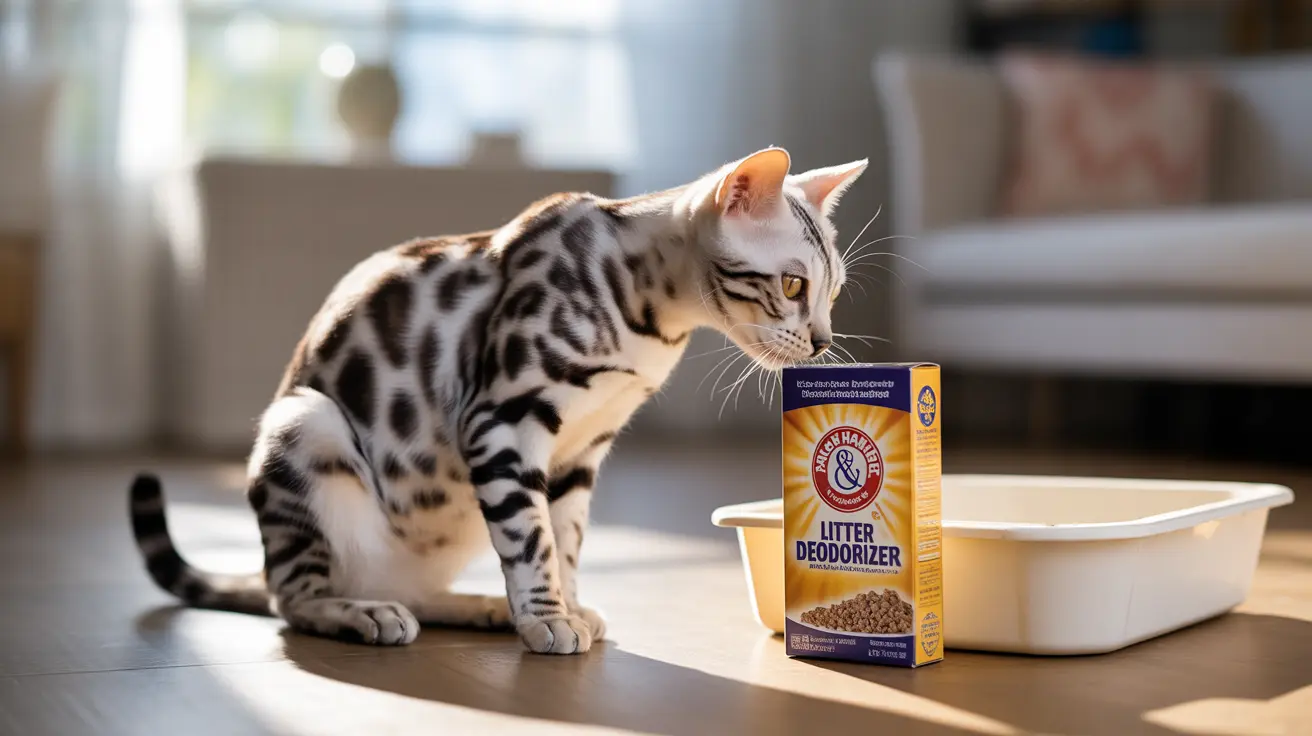If you're considering using Arm and Hammer litter deodorizer for your cat's litter box, you're likely concerned about both effectiveness and safety. This comprehensive guide will examine the safety profile of Arm and Hammer litter deodorizer products and help you make an informed decision for your feline friend.
Understanding the safety aspects of litter box additives is crucial for your cat's health, as these products are used regularly and can directly impact your pet's respiratory system and overall wellbeing. Let's dive into what makes these products safe or potentially concerning for cats.
Understanding Arm and Hammer Litter Deodorizer Components
Arm and Hammer's cat litter deodorizer primarily contains sodium bicarbonate (baking soda) as its main active ingredient. This natural odor neutralizer is generally safe for cats. However, the product also includes:
- Hydrated silica (as a flow aid)
- Proprietary fragrance mixture
- Moisture-activated scent compounds
The Safety Profile of Key Ingredients
The baking soda base is considered safe for cats when used as directed. However, the fragrance mixture contains several compounds that deserve attention:
- Linalool
- Citronellol
- Geraniol
- Coumarin
- Other proprietary scent ingredients
Proper Usage Guidelines for Cat Safety
To ensure your cat's safety when using Arm and Hammer litter deodorizer, follow these essential guidelines:
- Use only a thin layer as directed on the package
- Mix thoroughly into the litter
- Never apply directly to your cat
- Maintain proper ventilation in the litter box area
- Monitor your cat for any adverse reactions
Signs of Potential Sensitivity
Watch for these indicators that your cat might be sensitive to the deodorizer:
- Sneezing or coughing
- Watery eyes
- Avoiding the litter box
- Changes in breathing patterns
- Reduced litter box usage
Special Considerations for Sensitive Cats
Some cats may be more sensitive to litter deodorizers than others. This is particularly true for:
- Cats with asthma or existing respiratory conditions
- Senior cats
- Kittens with developing respiratory systems
- Cats with known sensitivities to fragrances
Alternative Options for Sensitive Cats
If your cat shows sensitivity to Arm and Hammer deodorizer, consider these alternatives:
- Unscented baking soda alone
- Enzyme-based deodorizers
- More frequent litter changes
- Natural, fragrance-free options
Frequently Asked Questions
Is Arm & Hammer cat litter deodorizer safe for everyday use around cats?
Yes, when used according to package directions, Arm & Hammer cat litter deodorizer is generally safe for everyday use. However, it's important to use only the recommended amount and monitor your cat for any adverse reactions.
What ingredients in Arm & Hammer litter deodorizer could affect my cat's health?
The main ingredients that could potentially affect cat health are the fragrance compounds. While the baking soda base is safe, some cats may be sensitive to the added scents and perfumes in the product.
How can I use Arm & Hammer litter deodorizer safely to avoid respiratory irritation in cats?
Use a thin layer, mix thoroughly into the litter, ensure good ventilation, and never exceed the recommended amount. Avoid creating dust when applying the product, and keep the litter box in a well-ventilated area.
Are there specific fragrances or chemicals in litter deodorizers that might bother sensitive or asthmatic cats?
Yes, compounds like linalool, citronellol, and coumarin found in the fragrance mixture might irritate sensitive cats. Cats with asthma or respiratory issues may be particularly sensitive to these ingredients.
What should I do if my cat shows signs of discomfort after using Arm & Hammer litter deodorizer?
If your cat shows any signs of discomfort, immediately discontinue use of the product, clean the litter box thoroughly, and replace with fresh, unscented litter. If symptoms persist, consult your veterinarian.
When used properly, Arm and Hammer litter deodorizer can be a safe option for most cats. However, always prioritize your cat's comfort and health, and be prepared to explore alternatives if needed. Remember that good litter box maintenance and regular cleaning are the foundations of odor control, with deodorizers serving as supplementary aids rather than primary solutions.






